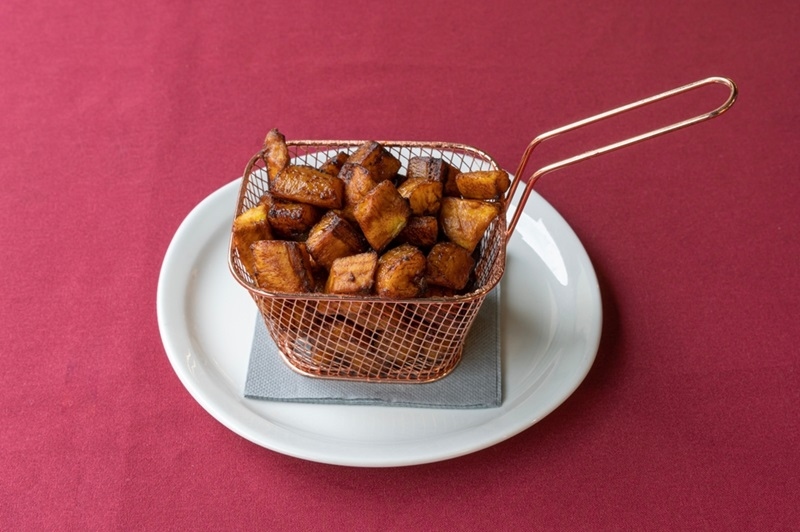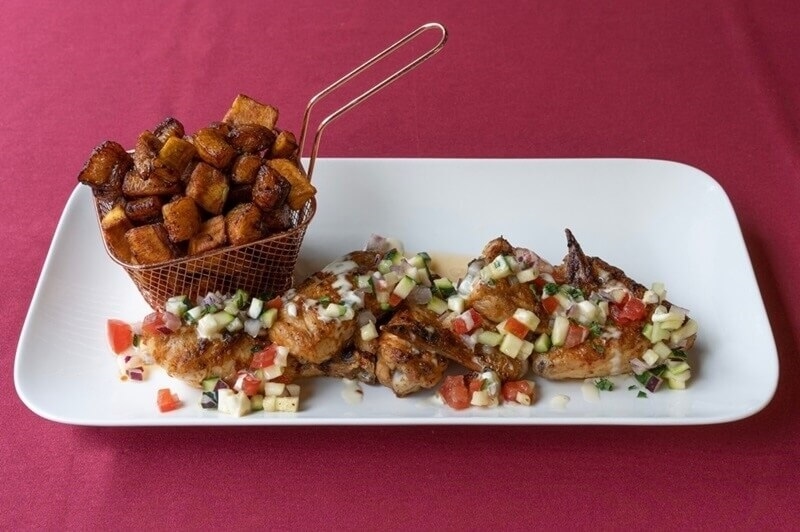
If you’ve ever walked through the lively streets of Accra in the evening, you’ve probably caught a whiff of something irresistible—sweet plantains sizzling away, coated in a spicy mix that makes your mouth water before you even take a bite. That, right there, is kelewele. It’s simple, it’s flavorful, and it’s one of those dishes that just feels like home.
For anyone who hasn’t had the pleasure yet, kelewele is basically spiced fried plantains, but calling it that doesn’t do it justice. It’s more than food; it’s culture in a paper bag. Crispy edges, tender inside, heat from peppers, warmth from ginger, a touch of sweetness—it’s comfort and excitement in the same bite.
If you’ve always wanted to recreate it in your kitchen, you’re in the right place. This guide will walk you through nine practical tips that will help you nail the perfect kelewele every single time.
The base of kelewele is plantain, so get this part right. You’ll want ripe plantains—yellow with some black spots. Too green and they’ll taste starchy, too overripe and they’ll fall apart in the oil.
The goal is to find that sweet spot where the plantain is soft enough to caramelize but still firm enough to hold shape. That balance is what makes African fried plantains like kelewele different from plain fried bananas.
How you cut your plantains affects how they cook. Traditional kelewele uses bite-sized cubes or small wedges, but you can get creative. Just keep the pieces uniform. If some are big and others are tiny, you’ll end up with uneven cooking—burnt bits alongside undercooked chunks.
Consistency ensures every piece crisps up properly while staying soft inside. That’s the magic of kelewele.
This is where the dish earns its reputation as Spicy African street food. The classic mix usually includes ginger, garlic, chili or cayenne pepper, and sometimes cloves or nutmeg for warmth. Salt ties it all together.
The trick? Balance. You want heat, but not so much that you can’t taste the sweetness of the plantain. A little experimentation is encouraged here—adjust the spice level to what you enjoy.
Here’s a step people sometimes skip. Tossing plantain straight into hot oil works, but letting it sit with the spices for even 10 to 15 minutes makes a huge difference. The ginger and pepper seep in, and every bite becomes layered with flavor.
Think of it as giving the plantains a chance to soak up the party before they hit the dance floor.
Don’t overcrowd the pan. If you throw too many plantains in at once, the oil temperature drops and you’ll get soggy pieces instead of crispy edges. Small batches fry evenly and give you that golden-brown color kelewele is known for.
Use a deep pan with enough oil to cover the pieces halfway. Turn them gently so all sides cook evenly.
Plantains can go from perfect to burnt in seconds. Medium heat is your friend. Too hot and the outside burns before the inside cooks, too low and they soak up oil like sponges.
A good test is to drop in a small piece first. If it sizzles immediately and floats, the oil is ready. Keep adjusting the heat as you go—kelewele likes attention.

Part of the joy of kelewele is how it’s served. In Ghana, vendors pile it into small paper bags or bowls. At home, you can do the same or plate it alongside peanuts, grilled meat, or even salad.
This is one of those Traditional Ghanaian snacks that works any time of day—late-night craving, quick lunch, or party food. However you serve it, kelewele is best eaten hot, straight out of the fryer.
Once you’ve nailed the basics, start experimenting. Add a squeeze of lime before serving for freshness. Sprinkle on roasted peanuts for crunch. Pair it with jollof rice or waakye to make a full meal.
If you’re looking for more plantain recipe ideas, kelewele is just the start. Bake it instead of frying for a lighter version, or try grilling marinated plantain pieces for a smoky twist.
Kelewele doesn’t need to be complicated. It’s supposed to be quick, fun, and deeply satisfying. Don’t stress about making it look fancy or perfect. If the flavors are bold and the plantains are golden, you’ve succeeded.
It’s also naturally meat-free, which makes it an easy African vegetarian dish. That’s part of its charm—it appeals to everyone, regardless of diet.
Let’s put all this together in a simple step-by-step recap.
Pick ripe, spotty plantains.
Peel and cut them into uniform chunks.
Blend or crush ginger, garlic, chili, and a pinch of nutmeg or cloves.
Toss the plantain pieces with this mix and let sit for 10–15 minutes.
Heat oil on medium. Test with a small piece.
Fry plantains in small batches until golden.
Drain on paper towels to remove excess oil.
Serve hot with peanuts or as a side dish.
Eat, smile, and maybe lick your fingers (nobody’s judging).
That’s kelewele in its pure form—street food vibes recreated in your kitchen.
Kelewele isn’t just about taste. It’s about the experience of eating something tied to memory, culture, and community. For Ghanaians at home or abroad, it’s often the first thing they describe when asked about food from home.
Cooking it yourself is a way of connecting with that tradition. You’re not just frying plantains—you’re carrying a piece of history into your own kitchen.
If you’ve ever wondered how to bring a little bit of Ghana into your meals, kelewele is the perfect place to start. It’s simple to learn, doesn’t require exotic equipment, and rewards you with incredible flavor.
Use these nine tips as your guide: choose the right plantains, cut them consistently, get your spice mix balanced, marinate, fry with care, and serve them hot. From there, experiment with flavors and make it your own.
The Ghanaian Kelewele Recipe isn’t just another entry in your cookbook. It’s a celebration of bold flavors, street food energy, and the joy of sharing. Try it once, and you’ll understand why it’s loved across Ghana and beyond.
So the next time you’re in the mood for something sweet, spicy, and satisfying, don’t overthink it. Grab some plantains, mix up those spices, and let the aroma fill your kitchen. Dinner—or a late-night snack—is sorted.
This content was created by AI